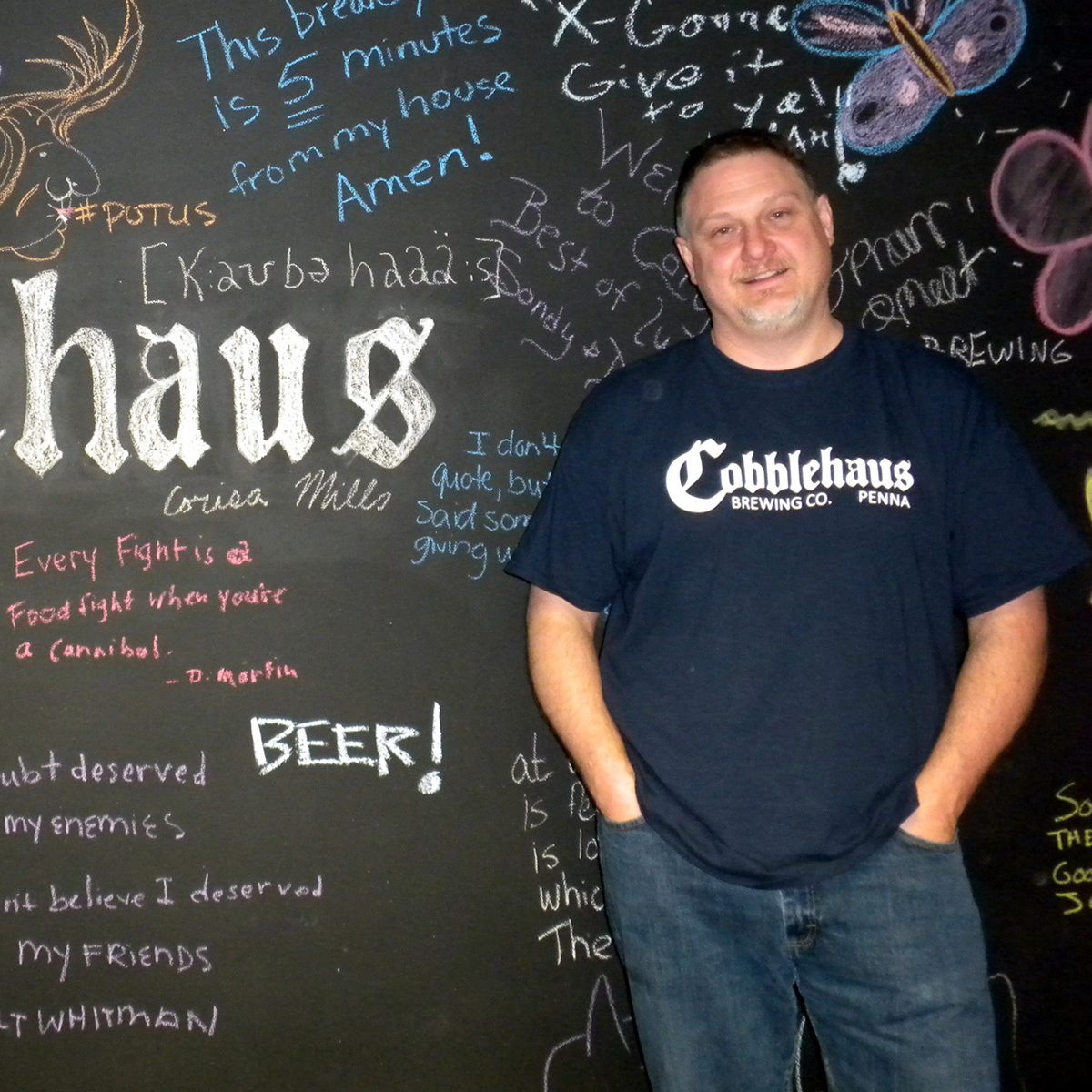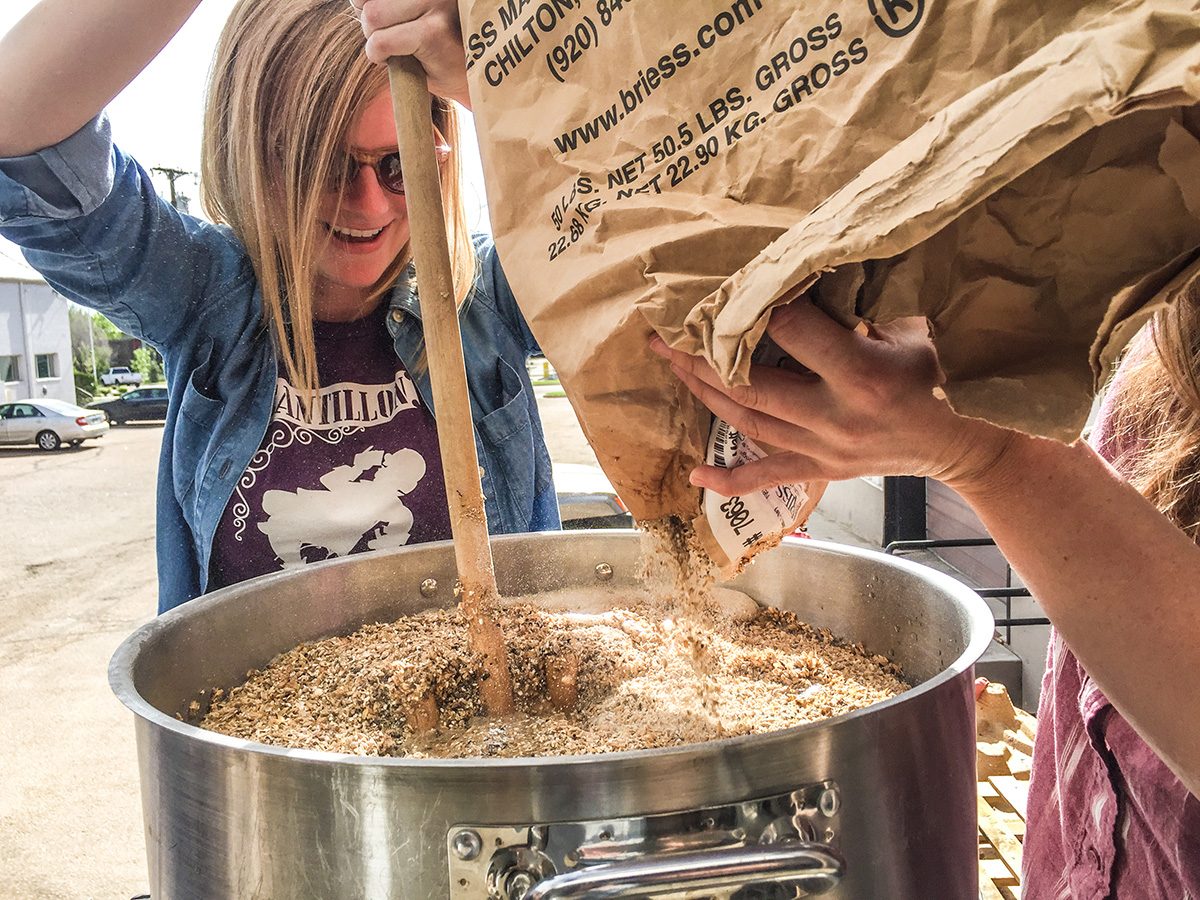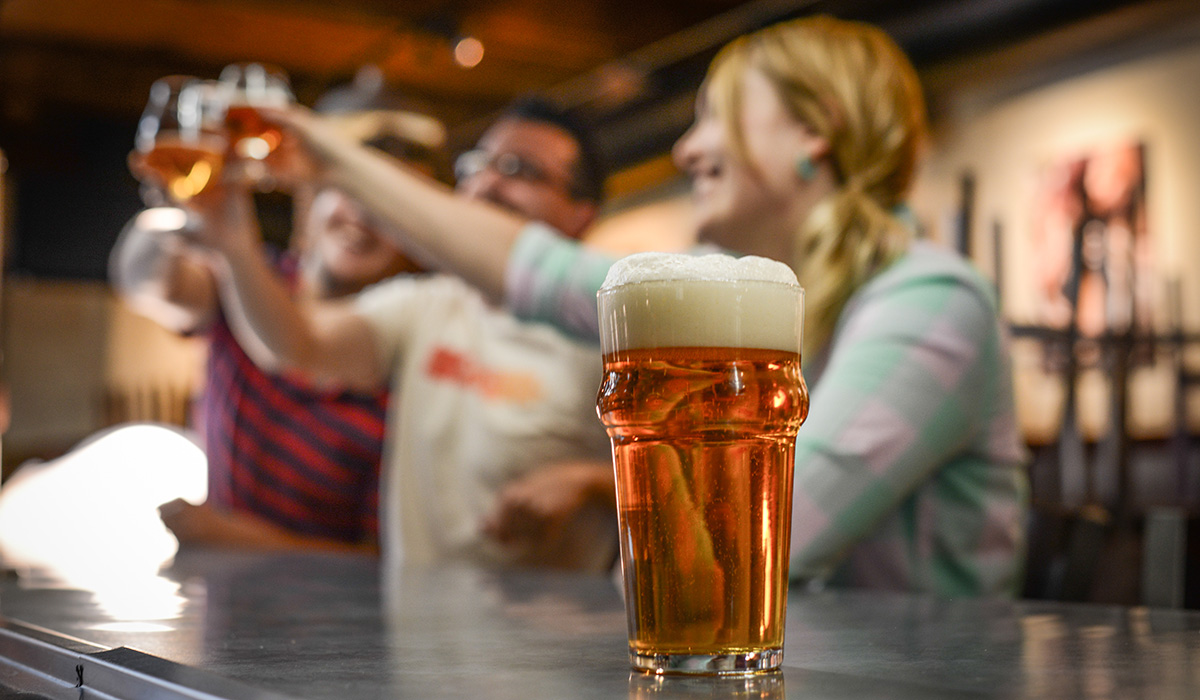Recently, I was in Florida on something of a vacation and opted to take in the local beer scene for an afternoon. I went to a pub reporting 40 different beers on tap and over 300 different bottled beers. I didn’t give my choice a bit of thought. I didn’t look around. I didn’t even take a minute. I scanned the list to find the first IPA I wasn’t familiar with and ordered it.
As I sat there enjoying that choice, I began to really review the menu for the first time. I started taking it in and began to feel a growing pang of disappointment in myself. First, I saw a barley wine that sounded very interesting. Then I saw an Alt beer (which I rarely get to try). Finally, I saw an IPA that I had actually been wanting to try for a while.
I suddenly had a moment of clairvoyance. I was disappointed in myself because I never gave this bar a minute when I first walked in. And why the hell was I rushing? I was on vacation.
(VISIT: U.S. Breweries with Beer Hotels)
This got me thinking about the guests at the taproom where I work. They see tap lists that provide a ton of options, and some may not always be as familiar as a stout or an IPA. I can understand the notion of sticking with the tried and true in most arenas — jeans, shoes, pizza toppings — but small and independent craft beer relies on us as beer drinkers to be as daring, knowledgeable and thoughtful as the brewer himself. Complacency is the ultimate adversary to progress.
In 2018, let’s do our part. Let’s embrace our role in enhancing craft beer. I have nine thoughts on how we as beer lovers can think, and drink, in the new year.
1. Try Something New

This one’s simple and easy. Scan a menu until you see something unfamiliar, and then order it. Don’t be afraid. When I was on vacation, the first thing that my eyes jumped to upon entering the swanky little pub was that white slightly curved tap handle with the familiar green bulb on top — but I know all about Bell’s Two-Hearted Ale. I can have it at home. Seeing as I was in a new area, I wanted to try a beer that I couldn’t have back home. I wanted the secret stuff that the locals keep in a back room and don’t like to tell outsiders about, lest there not be enough for them.
Scott Mills, head brewer for Cobblehaus Brewing in Coraopolis, Pennsylvania, says, “[This] is something I am very interested in. Every time I see someone coming out with something I have not seen before…I typically target those [beers] when visiting other breweries.”
This doesn’t mean you have to ignore all beers you’ve already had. Just make an effort to give someone else’s beer a try. Who knows. You may even love it.
2. Don’t Dismiss a Beer Based on Beer Style
It’s something I hear incessantly while working at the pub: “Oh, I don’t want that, I don’t like brown ales.” I get it. You’ve had several brown ales, maybe you’ve even had a lot of brown ales and you know it’s just not your thing. Still, try to keep an open mind, and don’t shy away from these just because. Talk to the bar staff. That’s why they’re there. The brown ale on the list could be a traditional English Brown Ale rather than the different American Style Brown Ale you may often have. The differences can be more complex and subtle.
Andrew Volanski, the general manager for Voodoo Brewery’s Pub in Homestead, Pennsylvania, says, “I think the longer you drink craft beer, the more you are able to appreciate different aspects of all different kinds, which is why I think it’s important to cycle back to a style you maybe didn’t like in the past.” Don’t shy away from an amber because it’s too similar to a brown. Don’t ignore a saison because you didn’t like the last one you had. Give each beer a chance to stand on its own.
(READ: 3 Overlooked Beer Styles to Pair with FoodOpens in new window)
3. Treat Every Beer with Respect
Every beer you will encounter is a labor of love. Small and independent craft breweries are out there doing what they do in the interest of making good beer. They want to push boundaries and explore new concepts, and at the end of the day, the thing they want most is to put a good product out there.
Scott Mills agrees. “All brewers put a lot of time and effort crafting the beer for your enjoyment.”
When you offer a critique, allow some respect for the beer and the brewer to permeate your comments. Don’t simply comment, “I don’t like that at all,” or, “That’s awful.” Not only are those not helpful comments, it’s disrespectful. Brewers work very hard and just because you don’t care for a beer, doesn’t mean it is bad. In fact, it may be someone else’s favorite. Everyone is unique with a varying palate and though you may encounter a beer that you don’t like, that just means that it may not be for you.
4. Follow the Hype
There’s no real secret in something that’s hyped up. (That’s kind of the point isn’t it?) I, for one, never much understood why people wanted to ignore or dislike things that are popular. If you try them and determine that they’re not for you, then fair enough. But if you haven’t tried that latest and greatest thing people are talking about, what are you waiting for? Like Andrew from Voodoo says, “If people are talking about it, there’s a reason why.”
Of course, it should be mentioned that obsession with any one style can be dangerous. Shane Walters, a senior member of the Three Rivers Underground Brewers (TRUB) Homebrew Club, cautions, “Sometimes [these cause] people to forget about the other great beer styles out there.” Still, this is where the bleeding edge of craft beer innovation lives right now. Don’t be afraid to explore it.
(LEARN: 75+ Beer Styles)
5. Learn Something New 
Do you know why different beer glasses are shaped differently? Do you know why beers on nitrogen gas instead of CO2 have a silkier texture? Now is the time to find out and do some research. Personally, I believe my best interactions at the pub as a bartender happen when I can tell someone about something that they didn’t realize and seriously enhance their experience. Learning more about beer helps you to be a better student of the craft, which in turn allows you to give better feedback to brewers.
6. Take a Trip for a New Beer
Breweries are producing new beers all the time, and the best place to get a sample of those experimental elixirs is at the brewery itself. Moreover, given that brewing innovation requires considerable creativity, it’s no great stretch to imagine that creativity would spill out into taproom. Shane from TRUB feels the same way: “I [sometimes] consider it more [about] the brewery than the beer itself.”
Often unpredictable and rarely redundant, you will find a unique atmosphere at each and every brewery. Whether rustic and worn or chic and modern, you’ll find that the breweries themselves can be just as interesting as the beer that they’re producing. Why not take that couple-hour day trip you’ve been meaning to for a while now?
Check out a new town, take in a new pub and try yourself a new beer. That is kind of the overarching message here anyway. We have a ton of beercation destination ideas right here on CraftBeer.com to help you plan.
(VISIT: Find a U.S. Brewery)
7. Volunteer at a Beer Festival
For the most part, I am sure that any craft beer enthusiast has been to a beer festival. There are thousands throughout the country. In fact, I’m sure most have an agenda of festivals to hit throughout the coming year. Why not just volunteer at one of these? Festivals are often looking for volunteers to help them pull off a massive amount of work, and they can be a great way to help out the community. It does require a bit of work on your part (almost certainly lugging bags of ice), but most of the time you get to attend a festival for free, maybe chat with a brewer and get to see and appreciate just how much work goes into these events. It’s definitely worth your time.
Andrew from Voodoo has a lot of experience working festival events, and he says volunteering creates an excellent and unique perspective: “From a community standpoint there’s nothing better. You get to hang out with all different breweries…I would encourage anyone who’s interested to help out at a festival if the opportunity presents itself.”
8. Share a Bottle with a Friend
It probably goes without saying, but the beer you will find in New Mexico will probably be unlike almost any beer you can lay your hands on in Boston. If you have a friend who lives in another part of the country, reach out to them and arrange an exchange of beers when you two meet up (taking great care to properly handle the beer during your travels so that the beer arrives in your friend’s glass the way the brewer intended it to taste).
9. Visit a Homebrew Club Tasting

This is where alchemy is happening! Homebrew club tastings are where the beer runs the gamut from simple to downright bizarre, and it’s an excellent place to get your taste buds on something no one else has had before. Nothing gets the creativity gears turning like a nice hibiscus and elderberry Berliner Weisse (not kidding, that was an actual beer I had one time).
“I think that by visiting a homebrew club meeting one would have access to much more in-depth knowledge of how beer is created…from malts [and] hops to perceived bitterness and tannins…it may open their mind to what they are tasting,” Shane from TRUB says.
Homebrew clubs are fairly ubiquitous. Do a searchOpens in new window on the American Homebrewers Association’s website to find one nearby. Clubs usually meet on a fairly regular basis to talk shop, trade beers and of course drink a few. They are very open and welcoming, so don’t be afraid to meander into a meeting.
(WATCH: What’s the Next Trend in Beer?)
If there’s one thing that’s worth taking into 2018, it is that beer is an art form that people invest in varying degrees. Regardless of how ardent your passion for beer, the best thing that you can do to help the entire craft beer industry is to drink it and respect it. Offer constructive critiques if you must, but more importantly, work to learn more about it and try to understand better what you like and why. Realize the basis of your preferences while still permitting an appreciation for all styles and efforts. The success of any industry such as this relies on the consumer as much as the producer. The brewer can make the beer, but without the customer giving good feedback (which comes from learning as much as possible about beer), the industry would stagnate. Creativity and innovation are born as much from the desires of the individual as from the drive of the artist themselves.
So for 2018, let’s all do our part and put our collective heads together. Beer is an amazing thing. There appears to be no limit as far as a creativity and innovation ceiling, so let us ride this Wonka-vator to wherever it will take us. Drinkers, keep encouraging the brewers. Brewers, keep feeding the drinkers! Here’s to 2018.
CraftBeer.com is fully dedicated to small and independent U.S. breweries. We are published by the Brewers Association, the not-for-profit trade group dedicated to promoting and protecting America’s small and independent craft brewers. Stories and opinions shared on CraftBeer.com do not imply endorsement by or positions taken by the Brewers Association or its members.


Share Post